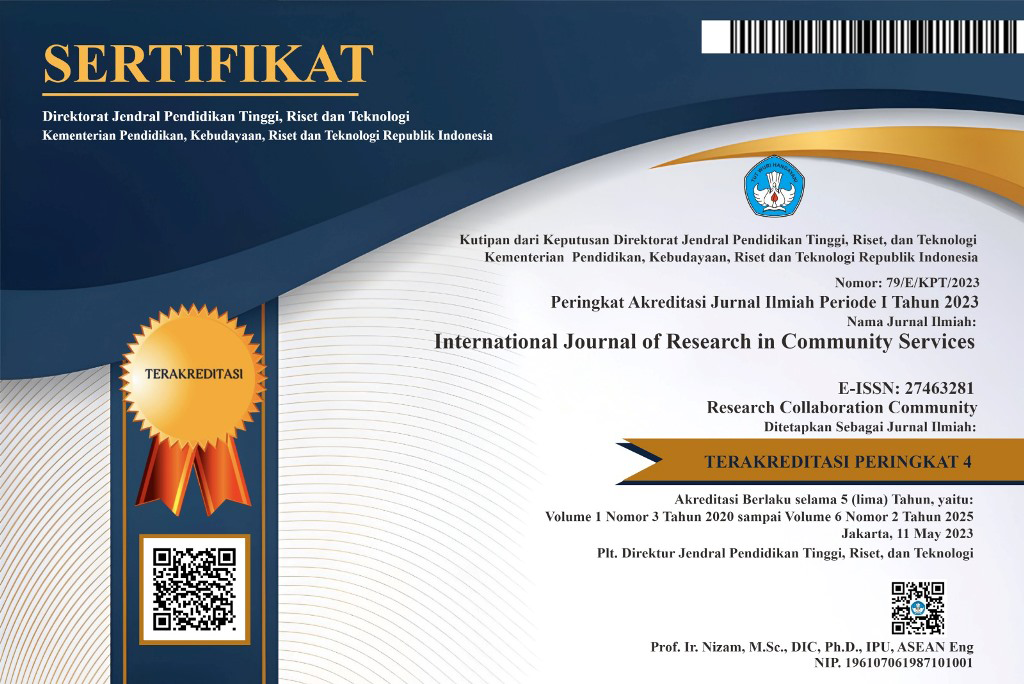Markowitz Model Investment Portfolio Optimization: a Review Theory
Abstract
Keywords
Full Text:
PDFReferences
Ardia, D. & Boudt, K. (2013). Implied Expected Returns and the Choice of a Mean-Variance Efficient Portfolio Proxy. Working Paper. AD´epartement de Finance, Assurance et Immobilier, Universite Laval, Quebec City (Quebec), Canada.
Bjork, T., Murgoci, A. & Zhou, X.Y. (2011). Mean-Variance Portfolio Optimization with State-Dependent Risk Aversion. Working Paper. Department of Finance, StockholmSchool of Economics, Box 6501, SE-113 83 Stockholm, SWEDEN. E-mail: tomas.bjork@hhs.se.
Garcia, Fernando, Jairo, A., & Javier, O. (2015). Mean-Variance Investment Strategy Applied in Emerging Financial Markets: Evidence From the Colombian Stock Market. Jurnal Mykolo Romerio Universitetas, 9 (2), 22-29.
Kamil, Anton, A., Chin, Y. F., & Kin, K. (2006). Portfolio Analysis Based On Markowitz Model. Journal of Statistics and Management Systems University Sains Malaysia, 9 (3), 519-536.
Kheirollah, A. & Bjarnbo, O., (2007), A Quantitative Risk Optimization of Markowitz Model: An Empirical Investigation on Swedish Large Cap List. Master Thesis, in Mathematics/Applied Mathematics, University Sweden, Department of Mathematics and Physics, www.mdh.se/polopoly_fs/ 1.16205!MasterTheses.pdf
Mangram, M. (2013). A Simplified Perspective of the Markowitz Portfolio Theory. Global Journal of Business Research SMC University Switzerland,7 (1), 59-70.
Panjer, H.H., Boyle, D.D., Cox, S.H., Dufresne, D., Gerber, H.U., Mueller, H.H., Pedersen, H.W., & Pliska, S.R. (1998). Financial Economics. With Applications to Investments, Insurance, and Pensions. Schaumberg, Illinois: the Actuarial Foundation.
Parmar, Chetna. (2014). Portfolio Selection using Min-Max Approach; Selected Bank in India: Markowitz Model. International Journal of Advanced Research in Computer Science and Management Studies RK University, 2 (1), 11-17.
Ruppert, D.(2004).Statistics and Finance: An Introduction. Springer-Verlag, New York.
Sirucek, Martin & Lukas Kren. (2015). Application of Markowitz Portfolio Theory by Building Optimal Portfolio on the Us Stock Market. Jurnal Mendel University, 63 (4), 1375-1386.
DOI: https://doi.org/10.46336/ijrcs.v1i3.104
Refbacks
- There are currently no refbacks.
Copyright (c) 2020 International Journal of Research in Community Services

This work is licensed under a Creative Commons Attribution 4.0 International License.
Published By:
IJRCS: Jalan Riung Ampuh No. 3, Riung Bandung, Kota Bandung 40295, Jawa Barat, Indonesia
Indexed By:

This work is licensed under a Creative Commons Attribution 4.0 International License.
View My Stats








